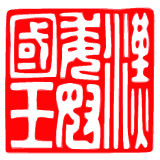Na

- Japanese: 奴国 (Nakoku, Na no kuni)
Na was a state[1] which was located in and around the modern-day city of Fukuoka, on the island of Kyushu, from the 1st to early 3rd centuries CE. Much of what is known about it comes from ancient records of both China and Japan.
According to the Book of Later Han, in 57 CE, Emperor Guangwu of Han granted Na an imperial seal, patterned after the Chinese jade seals, but made of gold. In return, that same year, Na sent envoys to the Chinese capital, offering tribute and formal New Year's greetings. This seal was discovered over 1500 years later, by an Edo period farmer on the island of Shikanoshima, thus helping to verify the existence of Na, which was otherwise known only from the ancient chronicles. Engraved upon it are the characters 「漢委奴国王」(kan no wa no na no koku-ō, King of the Japanese country of Na of Han).
A reference is found in the Gishiwajinden (魏志倭人伝, Biography of Japanese of High Aspirations), a portion of the Chinese Book of Wei, to the continued existence of Na in the 3rd century, naming the officials and stating that it contains over 20,000 homes.
Some believe that Na may correspond as well to "Na no agata" (儺県), a principality which preceded Fukuoka. An ancient cemetery discovered nearby, now known as the archaeological site "Suku", is believed to have been the burial site of the sovereigns (miyatsuko) of Na.
Notes
References
- This article was written by User:LordAmeth and contributed to both S-A and Wikipedia; the author gives permission for his work to be used in this way.
- Frederic, Louis. "Nakoku." Japan Encyclopedia. Cambridge: Harvard University Press, 2002.